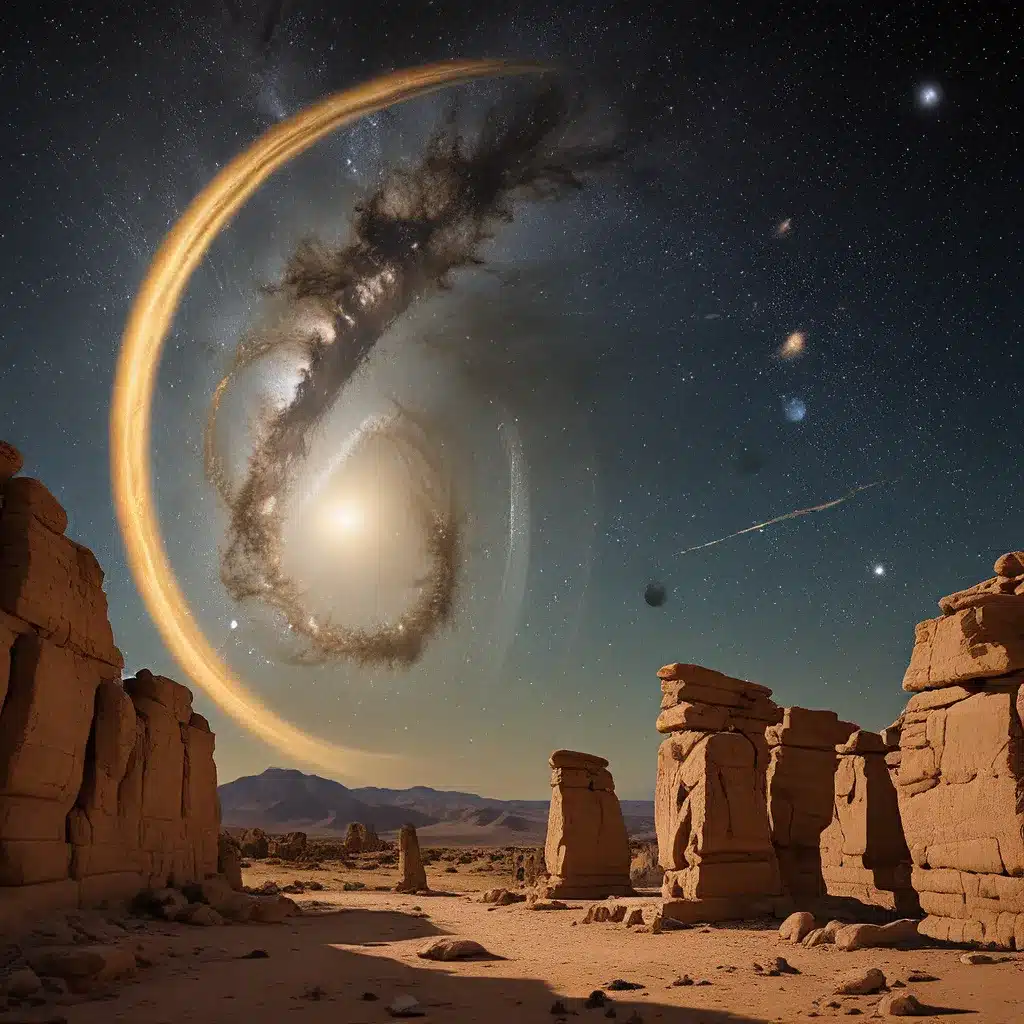
The study of ancient civilizations and their astronomical knowledge has long captivated scholars and enthusiasts alike. From the intricate celestial alignments of Stonehenge to the lunar standstill observations of the Ancestral Puebloans, the ability of our ancestors to meticulously track the movements of the heavenly bodies is nothing short of remarkable.
Decoding the Secrets of Sun Temple
One of the most intriguing archaeological sites in this regard is the Sun Temple, located within the Mesa Verde National Park in southwestern Colorado. Constructed nearly 800 years ago by the Ancestral Puebloans, this enigmatic structure has long been the subject of intense study and speculation.
The Colorado Sun article delves into the ongoing efforts to unravel the mysteries of Sun Temple, highlighting the work of researchers like Greg Munson and Sherry Towers. Munson, a former Mesa Verde park ranger, made a remarkable observation in 1997 when he witnessed the sun appear to “plunge” into the Sun Temple during the winter solstice, suggesting that this may have been one of the most advanced astronomical observatories in the ancient world.
Towers, a data scientist, has taken this research further, using computer modeling to theorize that Sun Temple is “shot through with sight lines” pointing not only to the rise and set of the sun at crucial dates like the equinoxes and solstices, but also to lunar cycles and an array of major stars that figure into Pueblo cosmology. The article notes that Towers’ research suggests the structure incorporates advanced geometric principles, including the use of a standard unit of measurement and the proportions of the golden rectangle and Pythagorean 345 triangles.
The Colorado Sun article highlights the challenges in unraveling the mysteries of Sun Temple, particularly due to the troubled history between researchers and the descendants of the Ancestral Puebloans. The Pueblo and Hopi people view these sites as sacred and living, and there is a delicate balance to be struck between the desire for scientific understanding and the respect for Indigenous beliefs and traditions.
Lunar Standstills: Tracking the Celestial Dance
The phenomenon of lunar standstills is another area of ancient astronomical knowledge that has captivated researchers and scholars. As described in the NewSpace Economy article, a lunar standstill is an astronomical event that occurs every 186 years, when the moon reaches its maximum or minimum declination, the angular distance measured from the celestial equator.
During a major lunar standstill, the moon’s orbit is aligned such that its maximum declination coincides with the summer and winter solstices, resulting in the moon rising and setting at its northernmost and southernmost points on the horizon. Conversely, during a minor lunar standstill, the moon’s minimum declination aligns with the equinoxes, causing the moon to rise and set closer to due east and west.
This cyclical nature of the moon’s motion has been recognized and celebrated by ancient civilizations around the world, from the Babylonians to the ancient Greeks. The article highlights how the alignment of sites like Stonehenge and the Callanish Stones in Scotland may have been designed to track these lunar standstill events, underscoring the profound importance of lunar observation in the lives and cultures of our ancestors.
Bridging the Gap: Archaeology and Indigenous Knowledge
As the research into ancient astronomical observations continues, there is a growing recognition of the need to bridge the gap between archaeological findings and Indigenous knowledge. The article on the Tiwanaku civilization in the Andes Mountains highlights the value of incorporating Indigenous perspectives and traditional ecological knowledge into the study of ancient cultures.
Phillip Tuwaletstiwa, a Hopi geodesist, emphasizes the importance of understanding the cyclical nature of time and the living, breathing nature of places like Mesa Verde for the Pueblo and Hopi people. He cautions against the use of the term “abandoned” when referring to these sites, as it fails to capture the ongoing connection between the descendants of the Ancestral Puebloans and their ancestral lands.
As The Lost Kingdoms article suggests, the collaboration between archaeologists and Indigenous scholars is essential for a more holistic understanding of ancient civilizations and their astronomical knowledge. By drawing upon both the analytical methods of archaeology and the intimate knowledge of Indigenous communities, researchers can gain deeper insights into the why behind the architectural and astronomical wonders of the past.
Unlocking the Mysteries of the Cosmos
The study of ancient astronomical observations is a testament to the ingenuity and curiosity of our ancestors. From the precision of the Ancestral Puebloans’ Sun Temple to the cyclical nature of the moon’s motion celebrated by diverse cultures, these discoveries shed light on the profound understanding and reverence our forebears had for the celestial realm.
As we continue to unravel the mysteries of the past, it is essential that we approach this task with a balanced perspective, respecting the sacred nature of these sites for Indigenous communities while also leveraging the latest scientific tools and methodologies to expand our knowledge. By bridging the gap between archaeology and Indigenous knowledge, we can gain a richer, more holistic understanding of the ways in which our ancestors sought to connect with the cosmos, and in doing so, deepen our own appreciation for the wonders of the universe.


